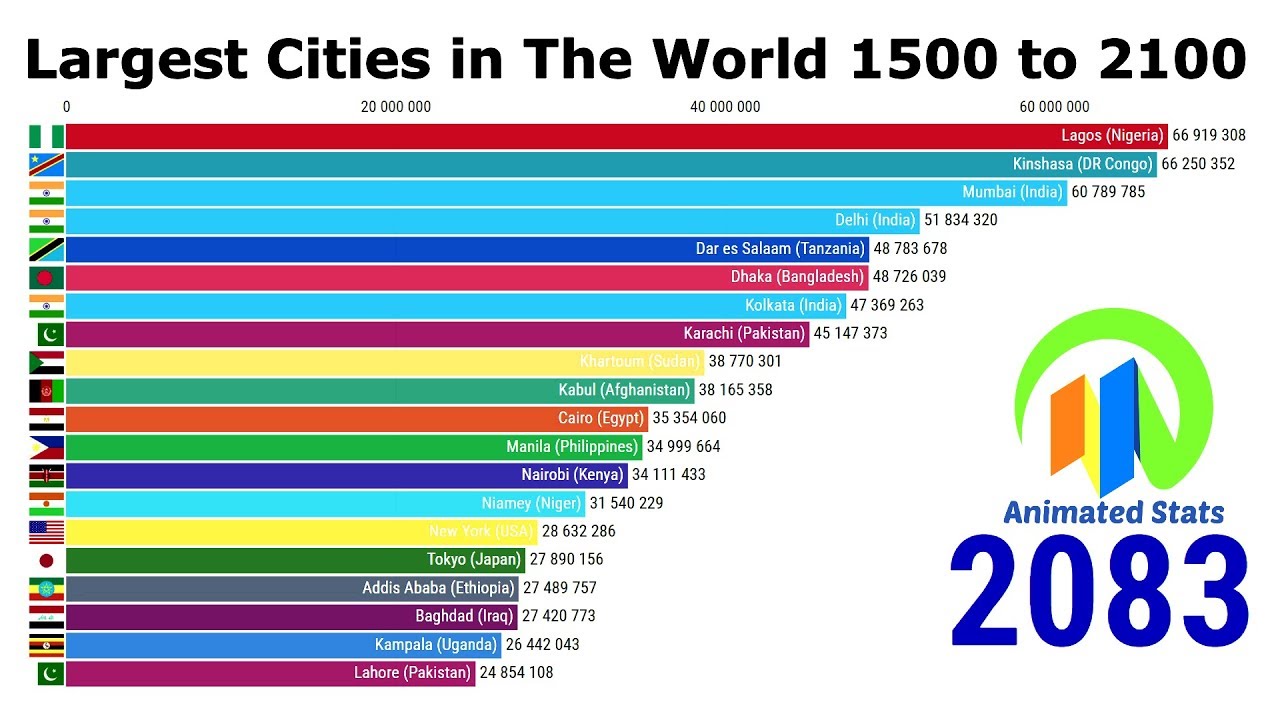Contenidos
Most populated cities in the world
most populated countries in the world
Currently there are nearly 7 billion inhabitants in the world, the paradigm of economic and social welfare derived from cities is beginning to be a myth, a review of the 10 most populated megacities in the world will open the reflection about their challenges and tasks.
Currently, the urban population exceeds the rural population, a fact that brings with it a series of challenges with the same epicenter: planning and infrastructure. An x-ray of 10 mega-cities worldwide will allow to open the reflection about their great challenges and tasks to be addressed.
At the same time, a census conducted by the UN indicates that the population concentration in these megacities is around 300 million inhabitants, and they are increasingly the engines of growth of their respective national economies; therefore, as economies grow, so do their challenges.
The paradigm of economic and social wellbeing derived from cities is becoming a myth in the face of the growing demographic explosion, which has led to the collapse -in several cases- of the standard of living and quality of life of their inhabitants, thus breaking with its fundamental premise, since the viability of a city is based on the efficient functioning of its infrastructure, which translates into sufficient energy, transportation, security and mobility services; air quality and environmental conditions; hospital and health services, water supply and budgets in line with the average income level of the people, a situation that is necessarily linked to the employment that the city in turn is able to offer.
largest cities in latin america
Big cities where there are only buildings and where the most natural thing is the parks that are created so that there is at least some green in the concrete jungles. If you are one of those who prefer to visit the largest cities in the world and want to live in the middle of the chaos to go unnoticed we have this article that you will love. These are the most populated cities in the world.
China is the most populated country in the world and Shanghai is the first of its cities in this list. With its 24 million inhabitants, it could be very crazy to visit this place in a country with such a rich culture, but at the same time so different. That’s why we recommend you to read The 9 best tips for traveling to China for the first time.
DON’T MISS ANYTHINGSubscribe to our NewsletterReceive offers of our best trips with discounts up to -50% in your emailInvalid email address Try it. You can unsubscribe at any time.thank you for subscribing 🙂
europe’s most populated cities
Big cities where there are only buildings and where the most natural things are the parks that are created so that there is at least some green in the concrete jungles. If you are one of those who prefer to visit the largest cities in the world and want to live in the middle of the chaos to go unnoticed we have this article that you will love. These are the most populated cities in the world.
Another great Asian capital that is included in our list. And little by little it becomes one of the most visited places in the world. We are sure you have also thought about getting to know Southeast Asia, including the Philippine capital of Manila. A city with 24.6 million inhabitants.
China is the most populous country in the world and Shanghai is the first of its cities on this list. With its 24 million inhabitants, it could be very crazy to visit this place in a country with such a rich culture, but at the same time so different. That’s why we recommend you to read The 9 best tips for traveling to China for the first time.
most populated cities in the world 2021
There are currently close to 7 billion inhabitants in the world, the paradigm of economic and social welfare derived from cities is beginning to be a myth, a review of the 10 most populated megacities in the world will open the reflection about their challenges and tasks.
Currently, the urban population exceeds the rural population, a fact that brings with it a series of challenges with the same epicenter: planning and infrastructure. An X-ray of 10 mega-cities worldwide will allow to open the reflection about their great challenges and tasks to be addressed.
At the same time, a census conducted by the UN indicates that the population concentration in these mega-cities is around 300 million inhabitants, and they are increasingly the engines of growth of their respective national economies; therefore, as economies grow, so do their challenges.
The paradigm of economic and social wellbeing derived from cities is becoming a myth in the face of the growing demographic explosion, which has led to the collapse -in several cases- of the standard of living and quality of life of their inhabitants, thus breaking with its fundamental premise, since the viability of a city is based on the efficient functioning of its infrastructure, which translates into sufficient energy, transportation, security and mobility services; air quality and environmental conditions; hospital and health services, water supply and budgets in line with the average income level of the people, a situation that is necessarily linked to the employment that the city in turn is able to offer.






